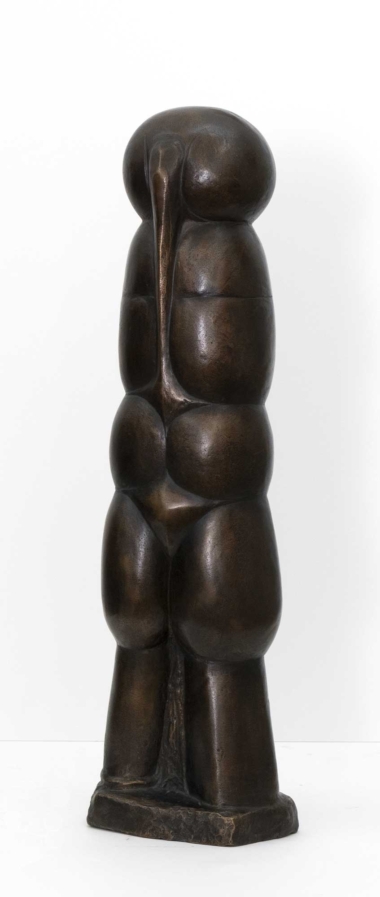Otto EDER was born in 1924 in Seeboden in Carinthia. In 1948, he initially studied under Walter Ritter at the School of Arts and Crafts in Graz, but moved to Professor Fritz Wotruba at the Academy of Fine Arts in Vienna in the same year and studied there until 1951. In 1964, he became a member of the Vienna Secession and co-founded the “Begegnung in Kärnten” association in 1967. In 1962, he was awarded the Austrian State Prize for Sculpture. Otto Eder, who was also a painter and graphic artist, worked primarily with stone, concrete, bronze and wood in his sculptures. Even his early works showed what was important to him: the reduction of the human body to haptic plasticity and an archaic form while maintaining harmonious proportions. His resting, voluminous and compact forms were not subject to any system. He reduced his figures to strict basic geometric forms: cones, cylinders, circles and triangles. At the beginning of the 1950s, Otto Eder developed a new, then sensational technique of “dowel sculptures” made of stones placed on top of each other. He later reduced the forms to physical, round, mostly female figures. The integration of the stone sculpture into the urban space was important for the artist from the start. Otto Eder died in Seeboden on Lake Ossiach in 1982.
Otto EDER was born in 1924 in Seeboden in Carinthia. In 1948, he initially studied under Walter Ritter at the School of Arts and Crafts in Graz, but moved to Professor Fritz Wotruba at the Academy of Fine Arts in Vienna in the same year and studied there until 1951. In 1964, he became a member of the Vienna Secession and co-founded the “Begegnung in Kärnten” association in 1967. In 1962, he was awarded the Austrian State Prize for Sculpture. Otto Eder, who was also a painter and graphic artist, worked primarily with stone, concrete, bronze and wood in his sculptures. Even his early works showed what was important to him: the reduction of the human body to haptic plasticity and an archaic form while maintaining harmonious proportions. His resting, voluminous and compact forms were not subject to any system. He reduced his figures to strict basic geometric forms: cones, cylinders, circles and triangles. At the beginning of the 1950s, Otto Eder developed a new, then sensational technique of “dowel sculptures” made of stones placed on top of each other. He later reduced the forms to physical, round, mostly female figures. The integration of the stone sculpture into the urban space was important for the artist from the start. Otto Eder died in Seeboden on Lake Ossiach in 1982.




Recent Comments